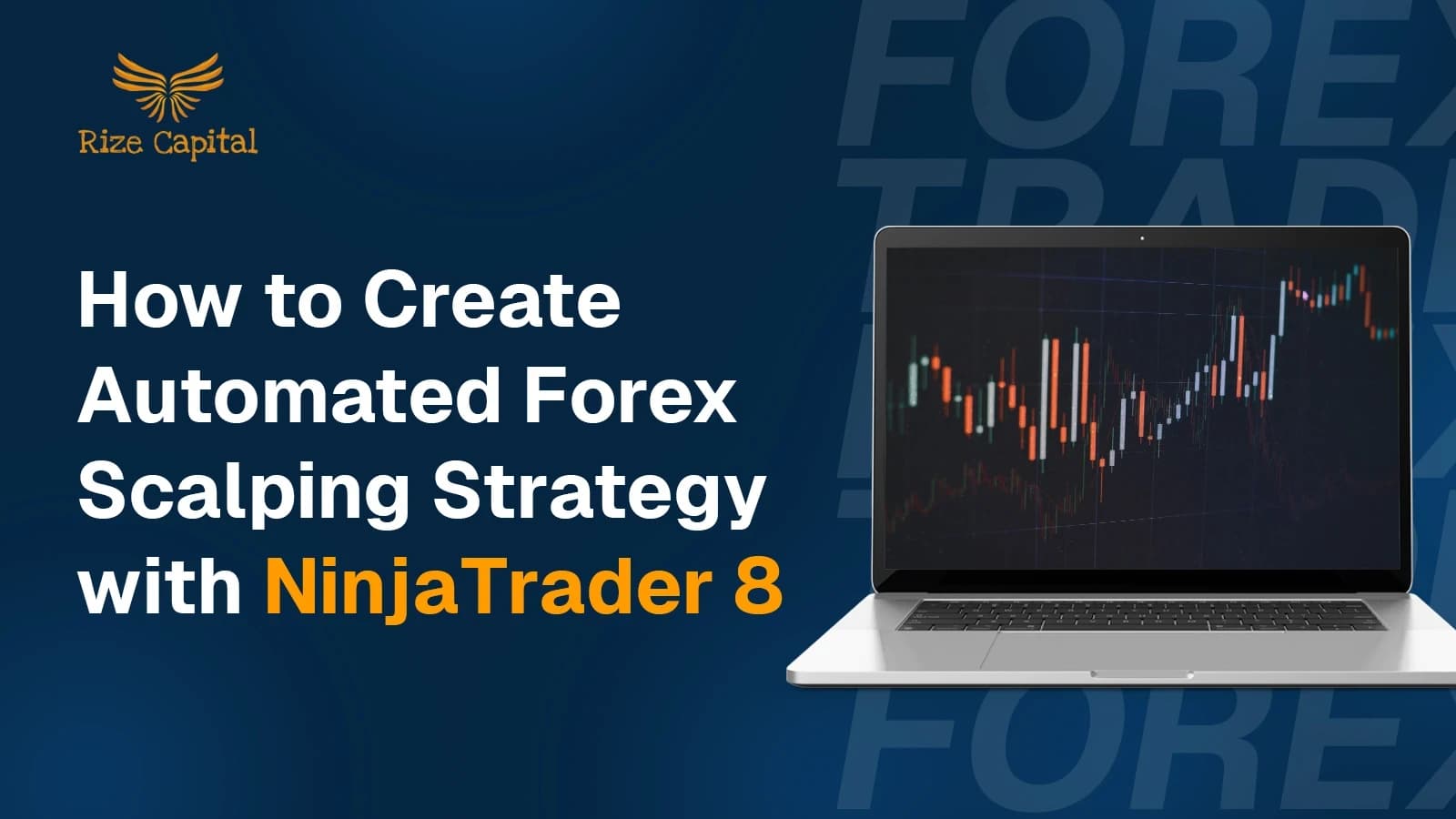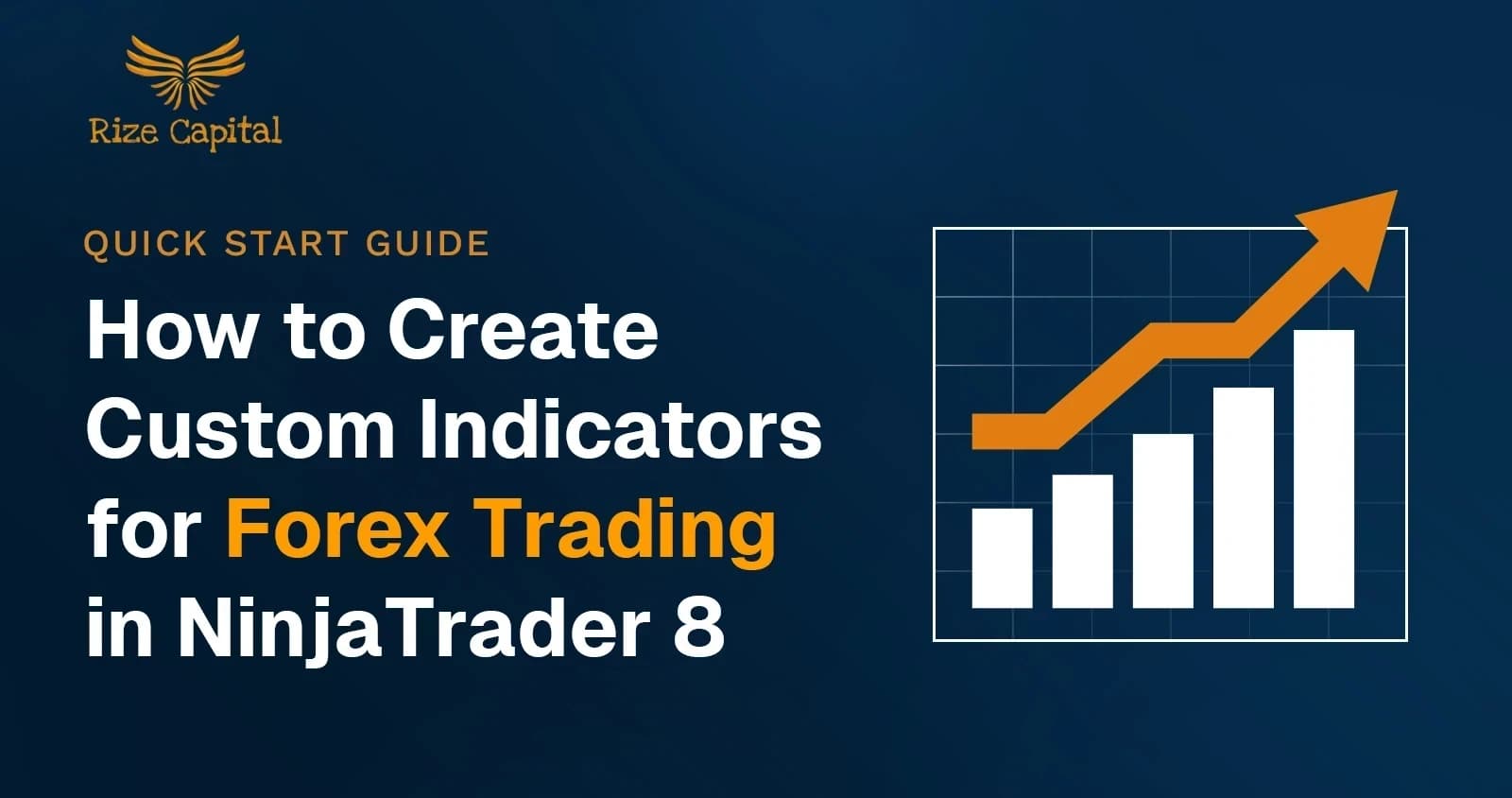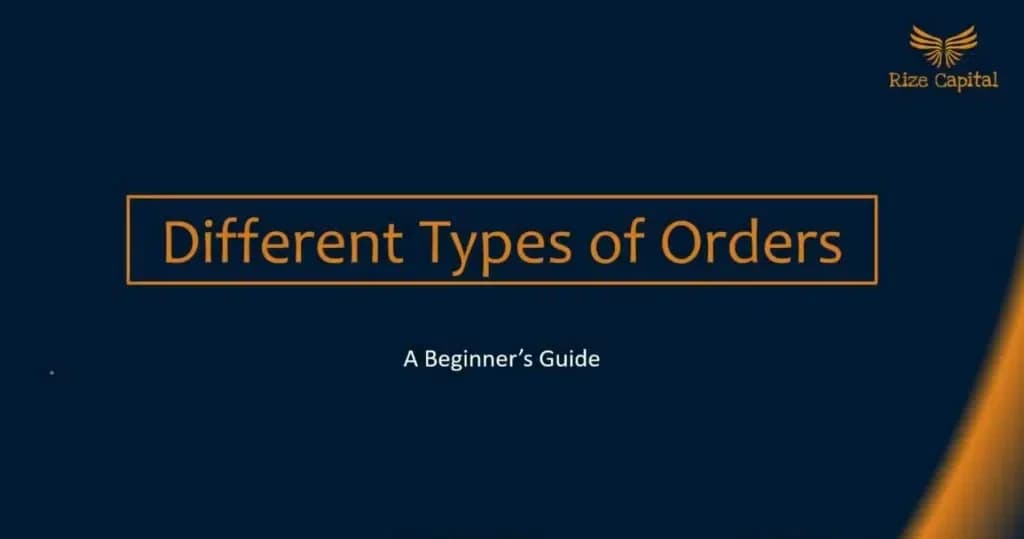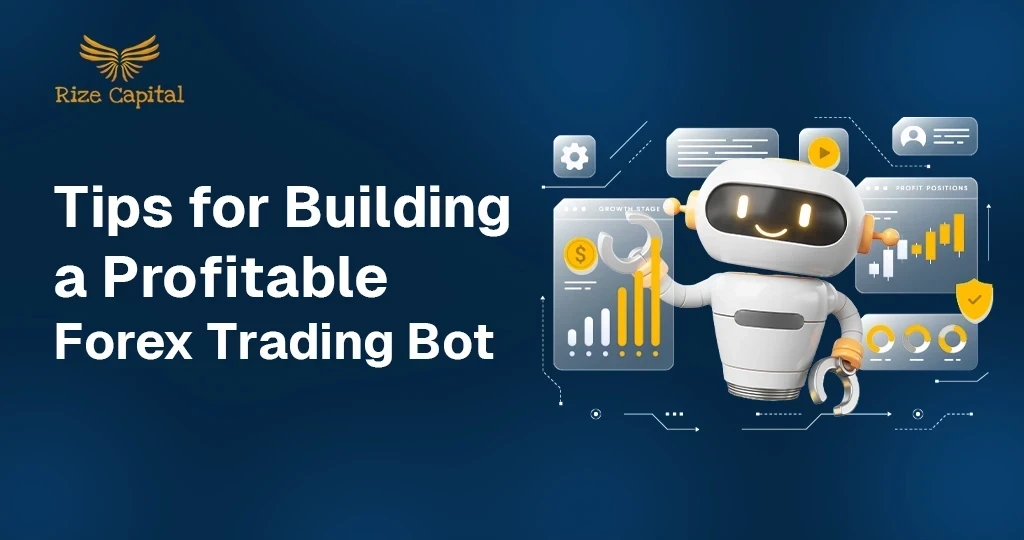Tips for Building a Profitable Forex Trading Bot
Learn how to build a profitable Forex trading bot with expert tips on strategy, coding, risk management, and backtesting for success in the market.
Think you have what it takes to build a profitable forex trading bot? Having coding knowledge isn’t enough; you need to know what kind of tool to make and how to market it to be profitable.
Moreover, there are lots of advanced bots available right now, and to be on top of your competitors, your tool needs to offer something unique.
In this guide, we will share some of our insider tips on building a profitable forex trading bot.
As one of the top providers of custom indicators and strategies, our teams have the knowledge and experience on what it takes to create a trading bot that sells. Therefore, without further ado, let’s get started!
Understanding Forex Trading Bots
Forex trading bots are computer programs that are programmed to make deals on the foreign exchange market with minimal input from a person.
These bots look at the market and carry out orders by following rules, algorithms, and sometimes even artificial intelligence that have already been coded.
Forex trading bots are better than human trading in situations where speed and accuracy are very important.
Components of a Forex Trading Bot
Building a successful trading bot requires attention to several critical components:
- Algorithm – The set of rules that dictate when and how to trade.
- Data Feed – Real-time market data is essential for making timely decisions.
- Risk Management – Tools such as stop-loss and take-profit orders that protect your capital.
- Backtesting Engine – A simulation environment that tests your bot’s performance on historical data.
- Execution System – An interface that connects your bot to trading platforms for order execution.
All of these parts are very important. For instance, a strong algorithm that can adapt to changes in the market can help businesses make more money, and a good backtesting tool can help them finetune their plans before putting real money at risk.
Essential Steps in Building a Forex Trading Bot
It takes both art and science to make a Forex trade bot that makes money. Careful planning, making smart decisions, and rigorous testing are all parts of the process.
Here is a step-by-step plan to help you make your own trading bot.
Planning and Strategy
Begin with a clear trading strategy. Figuring out your financial goals, risk tolerance, and market niche is important.
Ask yourself: What do you want your bot to do? Do you want short-term gains or stability in the long term?
Key planning steps include:
- Defining trading parameters (entry/exit signals, stop-loss levels)
- Determining your risk-reward ratio
- Setting measurable performance goals
Choosing a Programming Language
Choose a programming language that works well with algorithmic trading once you know what your plan is. Python, Java, and C++ are all common choices.
Python is very common because it is easy to read, has a lot of libraries for analysing data, and is simple to connect to trading platforms. Python's Pandas and NumPy libraries, for instance, make it easy to work with big datasets fast.
APIs like OANDA and Interactive Brokers let you trade in real-time. This is a very important step, because a language that is too hard to learn could slow down progress, and a language that is too easy to learn might not be able to support new features.
Integrating APIs and Data Feeds
Your trading bot needs up-to-date and correct market info to work. It is necessary to connect to APIs from well-known financial data companies.
A lot of brokers and financial sites have powerful APIs that let you get price feeds in real time, historical data, and trading tools. TradingView, for example, has powerful charting tools and data feeds that you can easily add to your bot.
When integrating these systems, pay attention to:
- Data accuracy and latency
- API rate limits and connectivity issues
- Security measures to protect sensitive data
Backtesting and Optimisation
Before putting your bot to use on a real account, you must do a lot of backtesting. Backtesting means comparing your program to market data from the past to see how well it works now.
This step helps you find possible problems with your plan and make it better.
In the backtesting process, consider the following:
- Testing across various market conditions (trending, volatile, ranging)
- Evaluating performance metrics such as drawdown, win rate, and profit factor
- Adjusting parameters and retesting until optimal performance is achieved
Incorporating Risk Management and Strategy
Effective risk management is the most important part of any trading system that makes money.
There are times when the market is unstable for even the smartest bots, and a strong risk management plan can mean the difference between long-term success and huge losses.
Risk Management Techniques
Determining clear rules for entering and leaving trades is an important part of risk management. Stop-loss orders let you get out of trades instantly if the market goes against you.
A take-profit order makes sure that you make money when your goals are met.
Consider these techniques:
- Position Sizing – Limit the amount of capital exposed to a single trade.
- Stop-Loss Orders – Define the maximum acceptable loss per trade.
- Diversification – Spread risk across multiple currency pairs or strategies.
Developing Profitable Trading Strategies
The core of a profitable bot is a sound trading strategy. Develop strategies based on technical analysis, fundamental analysis, or a combination of both. Some common strategies include:
- Trend Following – Buying when the market is rising and selling when it is falling.
- Mean Reversion – Assuming prices will revert to an average after extreme moves.
- Arbitrage – Exploiting price differences across different markets.
For example, a trend-following bot may use moving averages to identify entry points. A mean reversion strategy, on the other hand, might use Bollinger Bands to detect overbought or oversold conditions.
Leveraging Latest Technologies and Trends
There are changes happening in the Forex trading world, and new technologies are having a big impact on trading tactics. Adding the newest technologies and trends to your trade bot is important if you want to stay competitive.
Artificial Intelligence and Machine Learning
AI and machine learning are changing the way automatic trading works in big ways. These technologies can find trends that human traders might miss by looking at huge amounts of historical data.
By learning from past trades, machine learning algorithms can keep improving tactics and make them work better over time.
When integrating AI, consider:
- Using supervised learning models to predict price movements
- Implementing unsupervised learning for market pattern recognition
- Incorporating reinforcement learning to adapt trading strategies dynamically
Cloud Computing and High-Frequency Trading
Traders can use cloud computing to run complicated programs without having to buy expensive hardware. This technology makes it possible to process data quickly and allows high-frequency trading (HFT), in which trades are made in a few hundredths of a second.
A trading bot that is stored in the cloud, for example, can get real-time data and make trades faster than a system that is kept locally.
Key advantages include:
- Scalability – Easily manage increased data loads during peak trading hours
- Reliability – Ensure continuous operation with minimal downtime
- Cost Efficiency – Reduce infrastructure costs while maintaining high performance
Troubleshooting and Continuous Improvement
Creating a profitable Forex trading bot needs ongoing upkeep and improvement, even after it has been put into use.
The markets change over time, and so should your trading method. To stay ahead, you need to keep fixing problems and making things better all the time.
Monitoring and Error Handling
Once your bot is online, keep a close eye on how it's doing. Set up alerts for trading that doesn't seem normal, and look over the logs to find mistakes.
A strong method for handling errors will help you deal with unplanned events in the market. For instance, if there is a sudden rise in volatility, your bot should stop dealing and let you know that you need to take action.
Consider these practices:
- Daily performance reviews
- Implementing automated alerts for system anomalies
- Regularly updating the bot’s software to address bugs and vulnerabilities
Optimisation Through Feedback
Gather feedback from both backtesting and real trading sessions. You can use this information to improve your plan, change the parameters, or even completely rewrite parts of your algorithm.
Iterative optimisation means that each time you try and make changes, your bot gets closer to running at its best.
Learn from the Experts
While this blog provides a brief guideline on building a profitable forex trading bot, you need more in-depth knowledge and weeks of practice to learn.
If you are trying to make such a trading bot or strategy for NinjaTrader 8, then RizeCap’s NinjaScript training courses can be the perfect way to learn.
FAQ
What are the best programming languages for building a Forex trading bot?
Python is widely recommended due to its simplicity and vast libraries for data analysis. Other options include Java and C++, but the choice depends on your familiarity and the bot’s requirements.
How do I ensure my trading bot adapts to changing market conditions?
Incorporate machine learning algorithms that enable your bot to learn from historical data and adjust trading strategies dynamically. Continuous backtesting and optimisation are essential.
What risk management strategies should I integrate into my bot?
Use stop-loss orders, position sizing, and diversification to protect your capital. These measures help reduce the impact of market volatility.
How important is backtesting in developing a trading bot?
Backtesting is critical. It allows you to simulate your bot’s performance against historical data, identify weaknesses, and refine your trading strategy before live deployment.
Can I use cloud computing to improve my bot’s performance?
Yes, cloud computing is reliable and scalable, which lets you do high-frequency trading and handle data quickly. This could be a big deal for cutting down on latency and handling a lot of info.
Conclusion
Making an automated Forex trading system that makes money is both difficult and satisfying.
You can make an automated system that helps you trade more efficiently by putting together a clear trading plan, strong risk management, and the newest technology.
Whether you choose to follow trends or use machine learning to make decisions on the fly, you need to keep testing and improving your approach to be successful.
Have you thought about which trading plan would work best for you? Start making your bot right away, try out different methods, and share what you've learnt with other buyers who are interested in the same things.
Disclaimer: The information presented in this article is for educational purposes only and does not constitute financial or investment advice. Always consult a qualified professional before making any trading decisions.

Shariful Hoque
SEO Content Writer
Shariful Hoque is an experienced content writer with a knack for creating SEO-friendly blogs, marketing copies and scripts.
Related Posts

How to Create Automated Forex Scalping Strategy with NinjaTrader 8
Learn how to create an automated Forex scalping strategy with NinjaTrader 8 using coding, backtesting, risk management, and real-time execution.

How to Create Custom Indicators for Forex Trading in NinjaTrader 8
Learn how to create custom Forex trading indicators in NinjaTrader 8 with this step-by-step guide, including setup, coding, and optimization tips.

Different Types of Orders in the forex market
Explore different forex order types like market, limit, stop, and advanced options to enhance your trading strategy and manage risk effectively.


